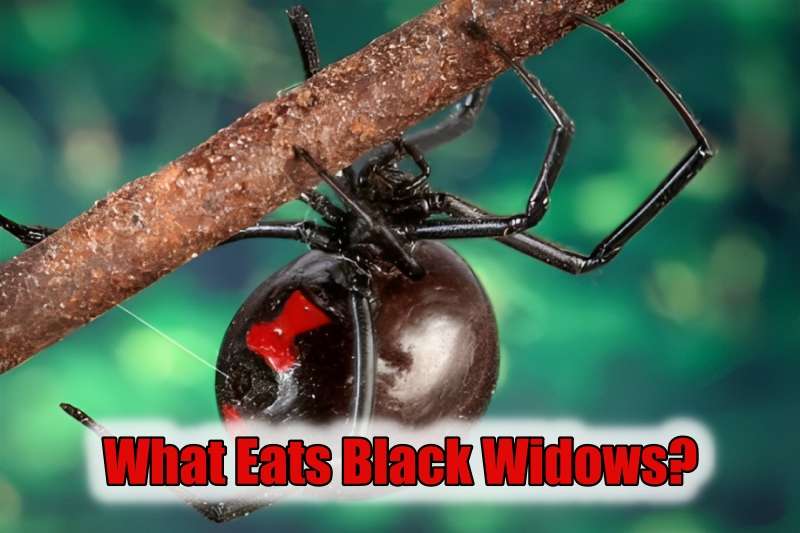Ever Wondered If Black Widows Are Dangerous? If Yes, What’s Brave Enough to Prey on Them? The Black Widows are common in yards, homes, and commercial buildings. According to reports, their venom is fifteen times more potent than that of rattlesnakes. Certainly, it sounds interesting! What creatures would thereafter be bold enough to eat them? Undoubtedly, there is a list of 10 of them. Let’s find out what eats black widows.
Let’s Know A Little About Black Widow Spiders
The little black widows are about 1.5 inches long, which is anyway quite a big enough size for spiders. The body of the female Black Widow is jet black and lustrous, and it has a characteristic red pattern on the abdomen. Male Black Widows and certain other varieties are brown or tan, with some orange markings.
Why are Black Widows Dangerous?
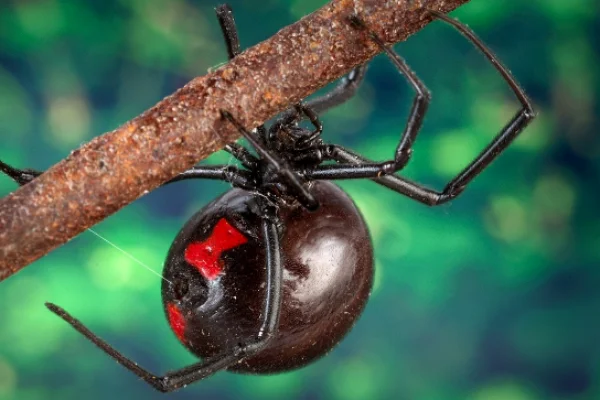
The venom produced by the black widow spider harms your nervous system. Some people are just mildly impacted by it, while others may react negatively.
Additionally, you can get stomachaches, cramps, and muscle spasms. Up to 12 hours after you were bitten, these symptoms may worsen. Then they ought to start leaving.
Only female black widow spider bites can be dangerous. Males lack enough venom to significantly harm someone.
Large amounts of venom are carried by female black widows. It’s also well-accepted that Widow spiders exhibit female sexual cannibalism, which means the females consume the males after mating.
But what people might not realize is that it doesn’t occur very frequently and that not all species engage in this behavior.
Such an act is uncommon and only occurs in constrained lab settings.
Black Widow Spider Toxin
The presynaptic neurotoxic α-Latrotoxin, which manifests lethal effects in the vertebrate central nervous system, is found in black widow spiders (Latrodectus). It causes excessive exocytosis of synaptic vesicles by stimulating neuronal calcium channels, which might have adverse effects on the neuromuscular, neurosecretory, and cardiovascular systems.
In addition to pain, swelling, redness, and rash, other symptoms could include headache, nausea, fever, chills, and occasionally hypertension.
Where Can We Find Them?
The Black Widow spider lives all over the world, including in the United States, but it is more widely spread in the South and West of the country, where the weather is hot, dry, and humid.
They are typically observed near woodpiles, in eaves, boxes, rodent holes, basements, barns, inside discarded blankets and shoes, and cracks in patios and decks. So, basically everywhere! Invading the premises wherever they feel comfortable around. They like dark, dry hiding places.
What Eats Black Widows
Due to the black widow spiders’ distinctive body patterns and markings, which most animals find repulsive, fewer species prey on them.
Since there are always exceptions to the rules, in this instance, there are some animals that even sting the spider to immobilize it before eating it and are apparently unaffected by its venom.
1. Praying mantises (Mantodea)

| Order | Mantodea |
| Geographic location | Found across all continents except Antarctica |
| Size | 10 mm – 120 mm |
In this game which lasts only a few seconds, the praying mantis would use its powerful mandibles to tear apart and eat the spider.
They make up the majority of the predators of this spider species and tops the list of what eats black widows. However, this spider can score a pyrrhic victory by biting off just moments before being eaten.
2. Alligator lizards
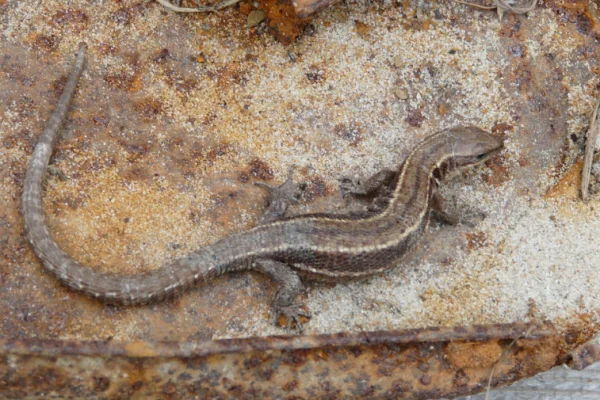
| Scientific name | Elgaria multicarinata |
| Geographic location | Pacific coast of North America |
| Size | 6.4-30 cm |
Southern California’s alligator lizards openly consume spiders. Throughout their long history of coexistence with widow spiders, these lizards have evolved an impressive resistance to their poison.
In the warm climates of the American West, lizards live close by widows. Black widows will even eat little lizards that might become caught in their webs.
3. Blue mud wasps (Chalybion californicum)
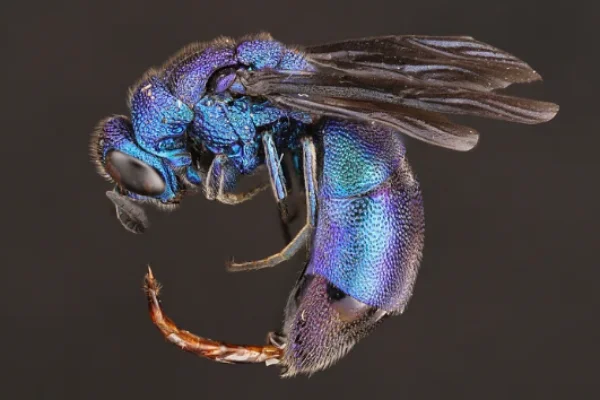
| Scientific name | Chalybion californicum |
| Geographic location | Northern Mexico to Southern Canada |
| Size | 10-23mm |
It seems inconceivable that blue mud wasps seek and consume black widow spiders. A lot. In fact, they one of this spider species’ primary predators. Although stunning and attractive, the Chalybion californicum wasp is yet aggressive toward black widow spiders.
The developing larvae are fed high-protein foods like spiders (typically the black widow, Latrodectus spp.), while the adults consume flowers.
These spiders are caught by the Blue Mud Wasp either by snatching them out of their protective webs or by tempting them away. The wasp then immobilizes the spider with its sting to prepare food for its growing young.
4. Other Wasps
| Scientific name | Vespidae |
| Geographic location | Throughout the world except Antarctica |
| Size | 1-2.5 cm |
Apart from the iridescent blue mud dauber, other wasp species that feed on black widow spiders include the flightless Scelionidae wasp (Baeus sp.), the chloropid fly (Pseudogaurax spp.), and the spider wasp (Tastiotenia festiva).
5. Birds
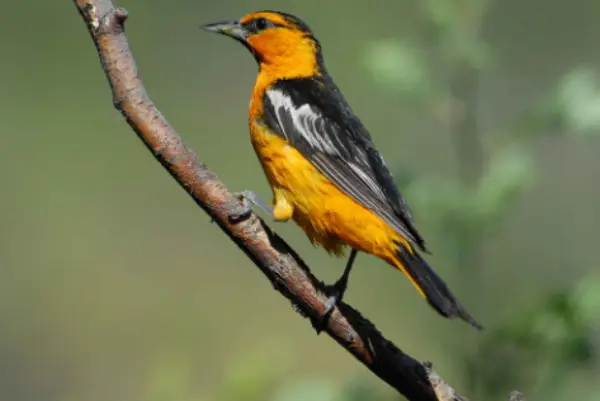
| Class | Aves |
| Geographic location | Throughout the world |
| Size | 5.5cm-2.8m |
Although birds occasionally eat the black widows, it is not frequently their preferred food. Actually, the poisons of black widow spiders cause stomach distress in birds when they eat them. Nevertheless, birds like crows and jays prey on black widows despite the other facts.
6. Cellar Spiders
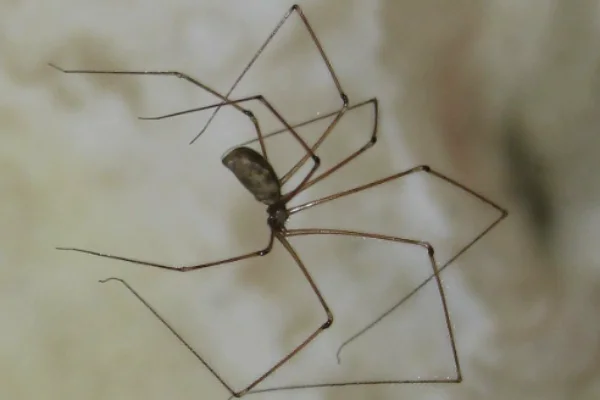
| Scientific name | Pholcus phalangioides |
| Geographic location | All over the world |
| Size | 7-8 mm long and front legs can be between 45-50 mm |
Black Widows are the favorite meals of cellar spiders, often called “Daddy long-leg Spiders.” They are the most venomous spiders that cannot attack humans due to their short fangs, which is a well-known fact.
Apparently, they have this reputation because they kill dangerous spiders like widows while remaining completely harmless to humans. The ability to capture the spider without being bitten is a skill these arthropods possess.
7. Chickens

| Scientific name | Gallus gallus domesticus |
| Geographic location | Across Southeast and South Asia |
| Size | 27.6 inches average |
Owning chickens is undoubtedly an excellent idea because they are effective against other spiders in addition to black widows. In family yards, they are frequently used to get rid of ticks and spiders.
8. Toads
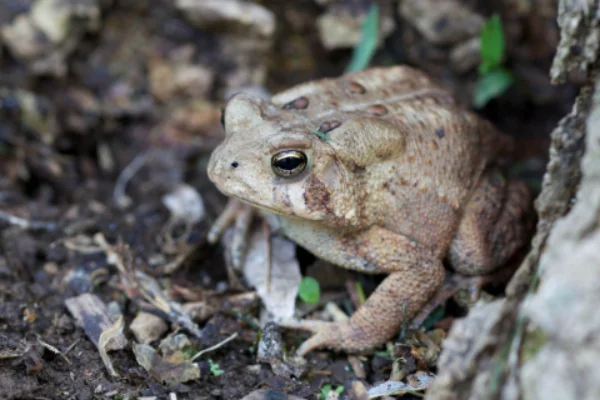
| Family | Bufonidae |
| Geographic location | South and Central America |
| Size | 15-25cm |
Frogs are omnivorous predators who will consume nearly any prey that can fit in their mouths. However, given how dangerous black widow spiders are, this is not a good practice for toads.
They do consume spiders, but they do not deliberately hunt them down to feast on. Instead, they only consume them in the rush of the moment.
9. Small mammals
Many mammals, including your pet dog or cat, often catch or eat black widows. Take them to the vet as soon as possible if you suspect they may have eaten this spider. The poisons in the spiders’ bodies could upset the stomach of your pet or they might even bite internally.
Aside from feeding on a wide variety of fruits, nuts, flowers, and seeds, monkeys also eat insects, spiders, and reptiles, including the accidental black widow.
Even though it’s not their usual meal, these little mammals can unintentionally consume those venomous spiders and hence surely make in our list of what eats black widows.
10. Humans
You did read that correctly. Although we are not true predators, we are a threat to black widow spiders since we intentionally kill them when we come across the species at home or accidentally crush them. Obviously, we don’t eat them, or maybe. I don’t know.
Conclusion
In conclusion, while the black widow spider is notorious for its venomous bite, it too has its place in the intricate web of nature. Various predators, from birds to insects, have evolved to feast upon these venomous arachnids.
This delicate balance of nature’s checks and balances reminds us that even the most feared creatures have a role to play in the ecosystem.
As we strive to coexist with these enigmatic spiders, understanding their place in the food chain is crucial for maintaining a harmonious and biodiverse environment.
Frequently Asked Questions
Q1. What is the natural enemy of the black widow?
Ans. The number 1 predator of black widow spiders in western North America is the blue mud dauber species, Chalybion californicum.
Also Read:

Anjali Prasad, a B. Pharm. graduate who works as a content writer for HowItSee, is based in Delhi. Except for her, not many people take the typical road from healthcare to writing. Her love of writing stemmed from her involvement in the college literature society and her early journaling at the age of 7. Hence, the love of learning and the spirit of exploration are what drew her to this career. You can find her on common social media like Instagram.
